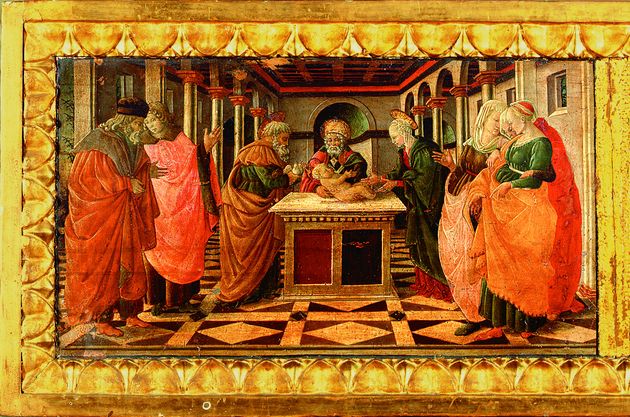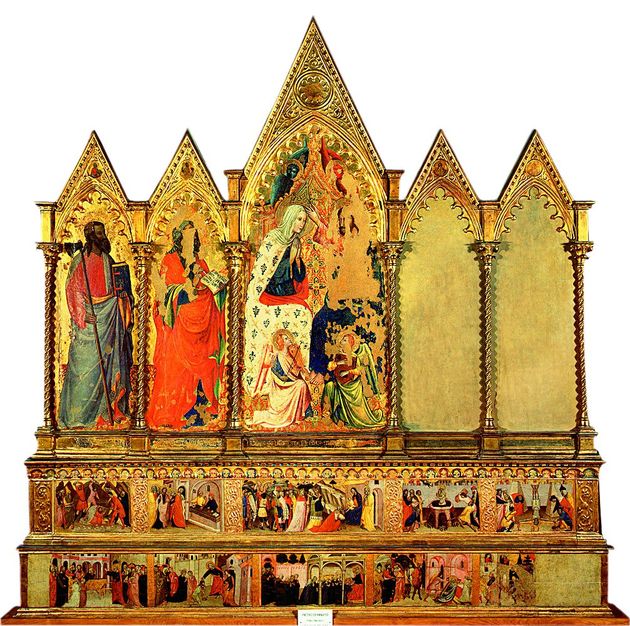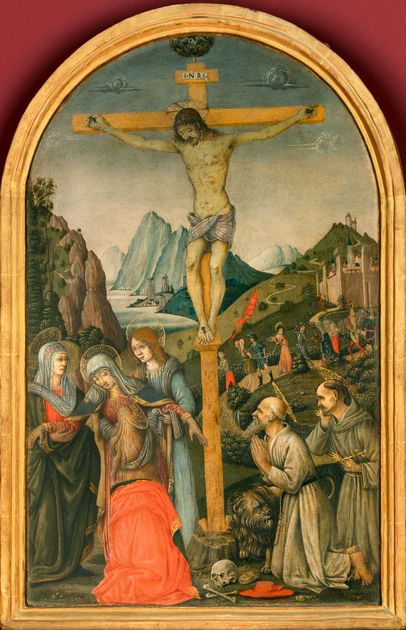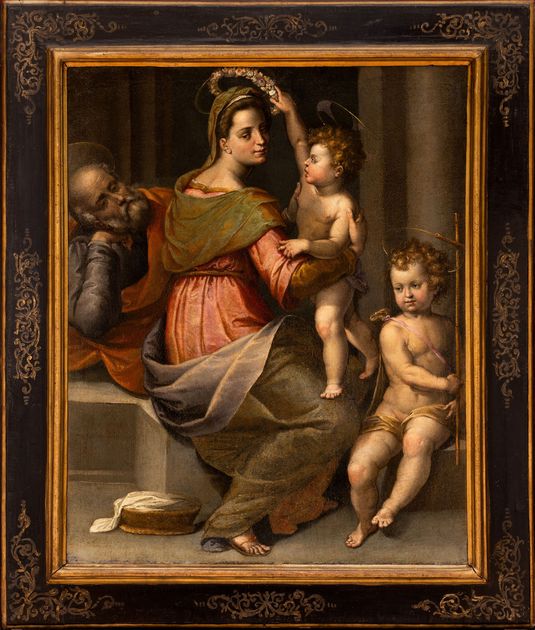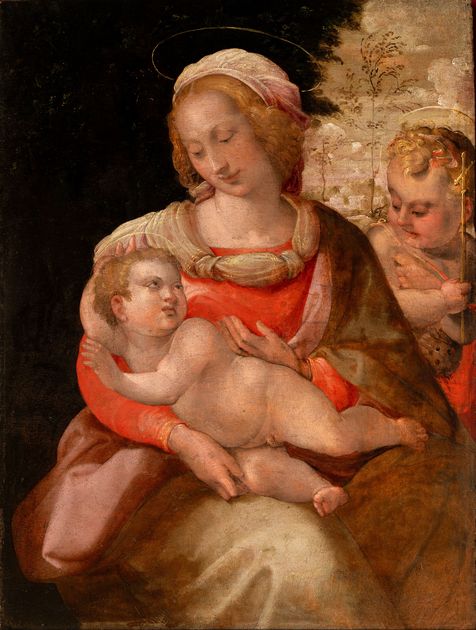The painting is the best of the known small-format replicas (at least 3) of the central figure of the so-called Valori Altarpiece: Crucifix between the Virgin Mary and St. Francis, which was painted by Filippino Lippi in 1498-1500 for the church of San Pancrazio in Florence and destroyed in 1945. The artwork had been commissioned by Niccolò Valori, a member of the most powerful family of the Piagnoni (the followers of Savonarola). His uncle Francesco had been killed in the attempt to save Savonarola from the capture preceding his execution in 1498.
The Prato crucifix shows Filippino’s direct intervention in the rendering of the anatomy, with the subtle colour changes overlaying the bloodless pallor of the body; also in the minute description of the hair and the wounded feet. No ornamental element disturb the simplicity of the composition, which is minimally enlivened with a few strokes of gold. A thin trickle of blood runs down the body, that white lily on the all-enveloping black, horizon-free background, and drips off the cross to give life to the Earth. To achieve salvation through the blood of Christ, writes Savonarola, we must repent, accept the mystery of the cross with pure faith, and meditate on the inevitability of death.










